-
February 11, 2016
Luc Tuymans, in conversation with Ulrich Loock
Andrzej Wróblewski’s search to find his own place, questioning both socialist government authorities and post-war experimentalism, meant that the artist would not find solace in his own times, but instead, paradoxically, his explorations have been cast into our present. At the beginning of the 1990s, the Belgian painter Luc Tuymans discovered a dual meaning in the Polish artist’s work as it revealed drama and spectre with which to reinvent history painting. The trauma of memory, the constant repetition in series and spatial meaning in Wróblewski’s narrative would be decisive in approaching the modern-day painting that lies between realism and abstraction.
-
February 12, 2016
Andrzej Wajda. Wróblewski According to Wajda
Presentation by Marta Dziewańska
International premiere. Film, 2016. Digital archive, colour, original version with Spanish subtitles, 40’. Courtesy of the Adam Mickiewicz Institute
Andrzej Wajdá is the most pre-eminent member of the Polish Film School movement, which also included film-makers such as Andrzej Munk, Wojciech Has, Feliks Falk and Jerzy Kawalerowicz. His work binds modernity from new European cinema and a reflection on national and identity issues in Poland, and this film, his most recent, sees the director of Kanal (1957) narrate an account of his own relationship with Wróblewski during the montage of an historic retrospective exhibition in the Manggha Museum in Kraków, the fourth show focused on the painter’s work. The film-maker, a contemporary of the painter’s generation, decided to relinquish painting after discovering his friend’s unique oeuvre, and would later take charge of organising the first solo exhibition devoted to Wróblewski, held in 1956, and the first collective exhibition centred on his work and held after his death in 1958. Furthermore, both projects were linked via a series of reciprocations and coincidences the film-maker and painter kept up at the time by way of an intense epistolary exchange.

Held on 11, 12 feb 2016
The contradictions and enigmas of Andrej Wróblewski (1927–1957) are tackled by a painter and a film-maker as they run through lateral and unknown interpretations of an intense and complex body of work. The painter Luc Tuymans, who engages in conversation with Ulrich Loock, and the film-maker Andrzej Wajda, via the premiere of his latest film Wróblewski According to Wajda, contemplate paintings that still challenge interpretive frameworks of 20th-century art history today. A realist and at the same time abstract, an individualist whilst also an advocate of collective artistic practice, experimental yet socially committed, Wróblewski considers a series of ambivalences through his work that call into question key aspects from both his own epoch and the present: the relationship between art and political ideology during totalitarianism, the possibilities for painting after the historical avant-garde movements, and the dilemmas between communication and experimentation in a world that was devastated after the war, among numerous other aspects.
Andrzej Wróblewski’s work barely spanned a decade, from the time of his participation at the First Exhibition of Modern Art (Kraków 1948), alongside Tadeusz Kantor and other artists, until his death in an accident in 1957. Between these two points in time a space opened in which a series of styles and opposing approaches would converge, for instance Geometric Abstraction, Socialist Realism, caricature and satire and Existentialist Surrealism. As a whole, this contradictory amassing uncovers painting’s place in the aftermath of The Second World War as it was caught between scepticism and historical avant-garde movements, the ethical obligation to publicly narrate trauma and the drive to imagine another future. In the artist's own words, it was about a dilemma concentrated between an understanding of “modernity as a laboratory of art techniques”, and producing “images that were as unpleasant as the smell of a dead body.”
This activity marks the end of the exhibition Andrzej Wróblewski. Recto / Verso, the broadest retrospective thus far on the work of this artist outside of Poland.
In collaboration with
Adam Mickiewicz Institute, Warsaw, and Instituto Polaco de Cultura de Madrid
Participants
Marta Dziewańska. Research curator at the Museum of Modern Art, Warsaw, with a PhD in philosophy from the Polish Academy of Sciences in Warsaw. Alongside Eric de Chassey, she is also the curator of Andrzej Wróblewski. Recto/Verso (Museum of Modern Art, Warsaw and Museo Reina Sofía, 2015).
Ulrich Loock. An Independent curator and art critic, and previously the director of Kunsthalle Bern and Kunstmuseum Luzern and deputy director of the Serralves Foundation, Porto. He has also organised a wide range of exhibitions, as either an independent or institutional curator, for seminal painters from 1970 to the present day, including René Daniëls, Christopher Wool, Gerhard Richter, Marlene Dumas and Luc Tuymans.
Luc Tuymans. Artist. His work came to prominence internationally from the 1990s onwards and he has been the subject of solo exhibitions at Tate Modern (London, 2004), Moderna Museet (Malmö, 2009), Wexner Centre (Ohio, 2009), SFMoMA (San Francisco, 2009), Palaix des Beaux Arts (Brussels, 2011) and Haus der Kunst (Munich, 2008), among numerous other art centres. He also represented Belgium at the Venice Biennale in 2001, and his work can be found among the most illustrious collections, for instance the Art Institute of Chicago, the Centre Georges Pompidou Paris, the Pinakothek der Moderne, Munich, and the Guggenheim Museum in New York.
Andrzej Wajdá. Film-maker. A member of the Polish Film School and the director of over thirty fiction films, including the noteworthy trilogy Generation (1955), Kanal (1957) and Ashes and Diamonds (1958) on life in Poland during World War Two and construed as a monument to human resistance. His awards include the Palme d’Or at Cannes for Man of Iron (1981), and an Academy Award (1999) and the Golden Bear (2006) at the Berlin International Film Festival in honour of his lifetime achievements. He is also a reference point in world and Eastern European cinema.
Más actividades
![Metahaven, The Sprawl: Propaganda about Propaganda [La diseminación: propaganda sobre propaganda], 2015, película](https://recursos.museoreinasofia.es/styles/small_landscape/public/Actividades/interfaz_emotiva_0.jpeg.webp)
EMOTIVE INTERFACE. The Films of Metahaven
Thursday, 27, Friday, 28, and Saturday, 29 November 2025 – check times
The Museo Reina Sofía and the Márgenes International Film Festival in Madrid, here in its fifteenth edition, present this series devoted to the artist collective Metahaven. The programme is framed inside the working strand both institutions started in 2024, focusing on an exploration of contemporary audiovisual narratives, a hybridisation of languages and the moving image as a tool for practising critical gazes on the present. Emotive Interface. The Films of Metahaven comprises two sessions of screenings and a masterclass delivered by the collective, centring on the relationship between the internet, technology, time and the moving image. All sessions will be presented by the artists.
The work of Metahaven — Dutch artist duo Vinca Kruk and Daniel Van der Velden — encompasses graphic art, video, installations, writing and design around urgent issues related to governance, identity, power and transparency in the digital age. Thus, their practice stands at the crossroads of art, film and critical thought, as they employ visual language as a tool to explore the tensions between technology, politics and perception, their practice combining the rigour of the visual essay and a strong poetic component, where graphic design, digital animation and documentary material fuse into dense, emotionally ambiguous compositions that speak of post-digital romanticism through an allegorical formulation. The spotlight of this series shines brightly on some of Metahaven’s recent works, for instance The Feeling Sonnets (Transitional Object) (2024), in which they examine language, poetry and digital time, and on The Sprawl (Propaganda About Propaganda) (2015), an essay which explores how the internet and social media have radically altered the relationship between truth, power and perception. Finally, the duo’s masterclass is set forth here as a survey of the main themes explored by both artists.
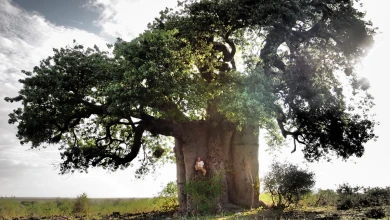
Francisco López and Barbara Ellison
Thursday, 11 December - 8pm
The third session in the series brings together two international reference points in sound art in one evening — two independent performances which converse through their proximity here. Barbara Ellison opens proceedings with a piece centred on the perceptively ambiguous and the ghostly, where voices, sounds and materials become spectral manifestations.
This is followed by Francisco López, an internationally renowned Spanish sound artist, who presents one of his radical immersions in deep listening, with his work an invitation to submerge oneself in sound matter as a transformative experience.
This double session sets forth an encounter between two artists who, from different perspectives, share the same search: to open ears to territories where sound becomes a poetic force and space of resistance.
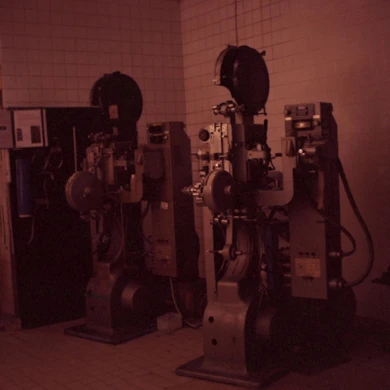
Long Live L’Abo! Celluloid and Activism
4, 5, 6 DIC 2025
L’Abominable is a collective film laboratory founded in La Courneuve (Paris, France) in 1996. It came into being in response to the disappearing infrastructures in artisan film-making and to provide artists and film-makers with a self-managed space from which to produce, develop and screen films in analogue formats such as Super 8, 16mm and 35mm. Anchored in this premise, the community promotes aesthetic and political experimentation in analogue film opposite digital hegemony. Over the years, L’Abominable, better known as L’Abo, has accompanied different generations of film-makers, upholding an international movement of independent film practices.
This third segment is structured in three sessions: a lecture on L’Abo given by Pilar Monsell and Camilo Restrepo; a session of short films in 16mm produced in L’Abo; and the feature-length film Une isle, une nuit, made by the Les Pirates des Lentillères collective.
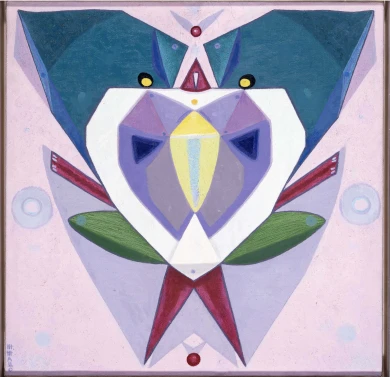
Estrella de Diego Lecture. Holding Your Brain While You Sleep
Wednesday, 3 December 2025 – 7pm
Framed inside the Museo Reina Sofía’s retrospective exhibition devoted to Maruja Mallo, this lecture delivered by Estrella de Diego draws attention to the impact of the artist’s return to Spain after her three-decade exile in Latin America.
Committed to values of progress and renewal in the Second Republic, Mallo was forced into exile to Argentina with the outbreak of the Civil War and would not go back to Spain to settle definitively until 1965 — a return that was, ultimately, a second exile.
Mallo saw out her prolific artistic trajectory with two impactful series: Moradores del vacío (Dwellers of the Void, 1968–1980) and Viajeros del éter (Ether Travelers, 1982), entering her most esoteric period in which she drew inspiration from her “levitational experiences” of crossing the Andes and sailing the Pacific. Her travels, both real and imaginary, became encounters with superhuman dimensions.
In parallel, her public persona gained traction as she became a popular figure and a key representative of the Generation of ‘27 — the other members of which also started returning to Spain.
This lecture is part of the Art and Exile series, which seeks to explore in greater depth one of the defining aspects of Maruja Mallo’s life and work: her experience of exile. An experience which for Mallo was twofold: the time she spent in the Americas and her complex return to Spain.
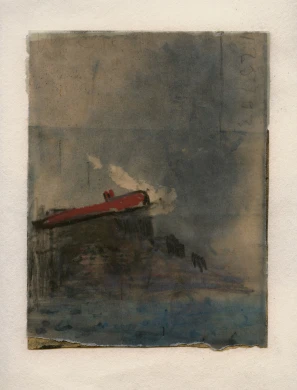
Juan Uslé. That Ship on the Mountain
Tuesday, 25 November 2025 – 7pm
Ángel Calvo Ulloa, curator of the exhibition Juan Uslé. That Ship on the Mountain, engages in conversation with artist Juan Uslé (Santander, 1954) in the Museo’s Auditorium 400 to explore in greater depth the exhibition discourse of this anthological show spanning four decades of Uslé’s artistic career.
The show casts light on the close relationship Uslé’s work bears to his life experiences, establishing connections between different stages and series which could ostensibly seem distant. Framed in this context, the conversation looks to explore the artist’s personal and professional journey: his memories, experiences of New York, his creative process, conception of painting, and ties with photography and film, and the cohesiveness and versatility that characterise his art. Key aspects for a more in-depth understanding of his artistic sphere.
The conversation, moreover, spotlights the preparatory research process that has given rise to this exhibition to grant a better understanding of the curatorial criteria and decisions that have guided its development.
These inaugural conversations, part of the main working strands of the Museo’s Public Programmes Area, aim to explore in greater depth the exhibition narratives of the shows organised by the Museo from the perspective of artists, curators and specialists.
![Andrzej Wróblewski, Szofer (Szofer niebieski) [Chauffeur (Blue Chauffeur)], 1948, Private collection, Warszaw © Courtesy Andrzej Wróblewski Foundation](https://recursos.museoreinasofia.es/styles/small_landscape/public/Exposiciones/05._szofer_szofer_niebieski_1948_dzirki_uprzejmoyci_fundacji_andrzeja_wroblewskiego.jpg.webp)
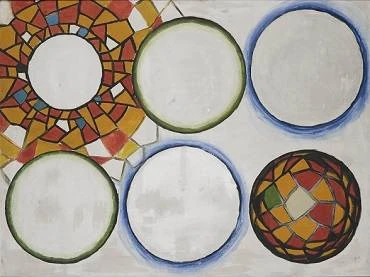



![Miguel Brieva, ilustración de la novela infantil Manuela y los Cakirukos (Reservoir Books, 2022) [izquierda] y Cibeles no conduzcas, 2023 [derecha]. Cortesía del artista](https://recursos.museoreinasofia.es/styles/small_landscape/public/Actividades/ecologias_del_deseo_utopico.jpg.webp)
![Ángel Alonso, Charbon [Carbón], 1964. Museo Reina Sofía](https://recursos.museoreinasofia.es/styles/small_landscape/public/Actividades/perspectivas_ecoambientales.jpg.webp)